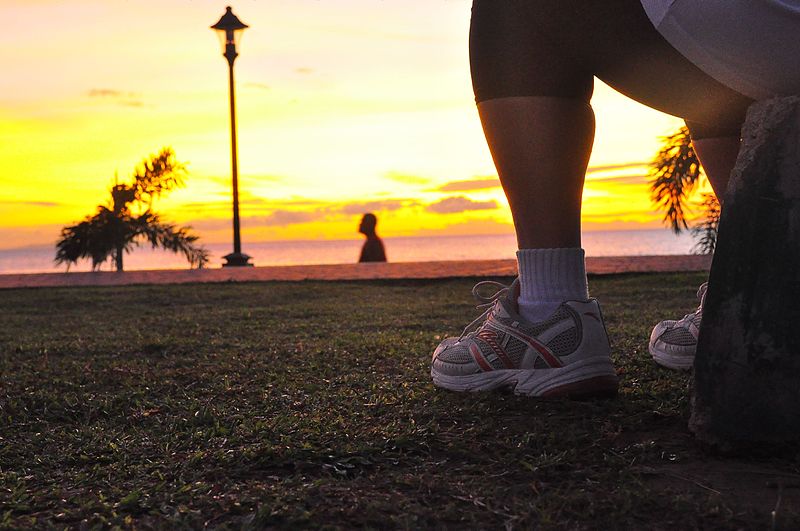This is from the series “using shallow marketable titles” to show there is much more to it than what is shown in these low content articles. I just copied a title that a lot of marketing-successful authors are using to suggest a more critical perspective on the theme of recovery.
This is not intended as a full review article (this will come later I promise). It is my own list of “recovery tips” based on what I consider the best combination of skills to provide this type of advice:
- Experience with lifting (that comes first, before anything else)
- Common sense
- Proficiency in the language of the health sciences
- Proficiency in quantitative methods
- Proficiency in optimal use of scientific evidence to make decisions (no, the decisions are not in the article: you need to read it and employ your experience and common sense to make any use of scientific data)
First of all, let us define what is meant by recovery and choose the one these marketing experts are using:
- Recovery from a damaging condition which includes, but is not limited, to
- Injury
- Burnout
- Other sub-performance syndrome
- Accidents
- Recovery from one training session to the other
- Recovery after a competition
The advice list will very according to what is meant by recovery. I’ll save you time: they mean recovery from one training session to the next.
The obvious list consists of (for some reason they are copying from each other)
Eat good quality foods
- Make sure your Pre,During and Post-Workout Nutrition is taken care of.What
- Get enough sleep.
- Get regular Sports Massage. ]
- Use Contrast Showers.
Instead of criticizing the obviousness and incompleteness (therefore, incorrectness) of these items, let us add some that scientifically matter
Do active recovery. Active recovery is some variety of light exercise, such as walking, swimming, etc. Active recovery is anything that keeps the athlete at about 40% of his VO2 max. Frequency: if possible, every day. If not, at least 3 times a week.
- Do intense, short duration cardio training: yes, you need to adopt protocols that will result in higher mitochondrial concentration in your muscle fibers to allow the oxidative recovery period to be optimal. Frequency: around 3 times a week.
- Take care of your life stressors. There is increasing research about the inflammatory overload that external life stressors have on athletic recovery. While they cannot be avoided, coping methods exists and each works well for different people. No recipe here: different things will work for different people
- Understand your metabolism. Much more important than “eating healthy food” or “post and pre workout supplements” is understanding YOUR specificities. Some people have high post-prandial insulin release: their high glucose index carbohydrate intake is obviously different from those who haven’t. Some people are excellent fat oxidizers (and this is often related to neurological specificities as well). This is genetic and is being targeted for genetic typing. This is costly. You can do it by keeping food journals and analyzing them.
- Most and above all: PERIODIZE your training! There is NO recovery without planning for recovery!
If only people would stop reading and giving credit to obviousness and listening to those who can, through their practice, bridge the gap between science and practice, we would have less of this on the internet.
Here: this is what I read to write this short list. I am 100% sure those colleagues who publish the marketable lists above have not. Be a good information consumer and use it for your best decision-making.
Primary sources:
Martin, Nancy A., et al. “The comparative effects of sports massage, active recovery, and rest in promoting blood lactate clearance after supramaximal leg exercise.” Journal of Athletic Training 33.1 (1998): 30.
Barnett, Anthony. “Using recovery modalities between training sessions in elite athletes.” Sports medicine 36.9 (2006): 781-796.
Herzog, Thomas R., et al. “Reflection and attentional recovery as distinctive benefits of restorative environments.” Journal of environmental psychology17.2 (1997): 165-170.
Kellmann, M. “Preventing overtraining in athletes in high‐intensity sports and stress/recovery monitoring.” Scandinavian journal of medicine & science in sports 20.s2 (2010): 95-102.
Hemmings, Brian, et al. “Effects of massage on physiological restoration, perceived recovery, and repeated sports performance.” British journal of sports medicine 34.2 (2000): 109-114.
Bleakley, Chris M., and Gareth W. Davison. “What is the biochemical and physiological rationale for using Cold Water Immersion in Sports Recovery? A Systematic Review.” British journal of sports medicine (2009): bjsm-2009.
Image: By whologwhy [CC BY 2.0 (http://creativecommons.org/licenses/by/2.0)], via Wikimedia Commons

